First things first, you need to ask yourself: “Why is my face red, what am I dealing with?” There are a few different conditions that can cause facial redness. Issues like rosacea, acne and eczema will cause chronic redness while sunburns, vasculitis, food allergies, bug bites and cosmetic sensitivity can cause short-term facial redness. So, your first job is to pay attention to what your body has to say.
Rosacea is one of the most common things leaving women red in the face. While acne is pretty obvious, rosacea comes on a bit more subtly. Typically you’ll see the telltale redness along with inflammation around your cheeks, forehead, nose and chin. It’s all caused by enlarged blood vessels and some of us are much more likely to have it than others.
Women with fair skin are particularly prone to rosacea
According to the National Rosacea Society, 33% of women with this condition have at least one parent of Irish heritage and 27% have a parent of English descent. It’s also very common among people of Scandinavian, Scottish, Welsh or Eastern European descent.
If you think that you might have rosacea, have a chat with your doctor. The treatment is pretty straightforward. You’ll be told to limit your exposure to the sun, stress, spicy food, alcohol and any potential irritating creams and cosmetics. Your doctor might prescribe a medicated facial cream that will take away any minor irritation as it comes up. Some women also find birth control or acne treatments to be helpful.
Ultimately, internet diagnosis is only going to get you so far. If your skin is irritated, try a process of elimination to see what the cause might be and talk to a dermatologist. Covering up your skin with makeup is definitely not a long-term strategy, especially if your skin is inflamed and hurting.
Perfect your cleansing routine
Red skin is synonymous with sensitive skin. Whether you have acne, eczema or allergies, it’s important to avoid exacerbating the problem. Redness is a sign of irritation so don’t ignore it. Look for products labeled for sensitive skin and always opt for a mild, fragrance-free formula.
If you can’t decide which facial cleanser to get, look for a few key words on the label. You want something that is non-comedogenic and has a neutral pH level. Keep an eye out for ceramides and glycerin on the labels too. They are both ultra-gentle ways of removing bacteria and attracting moisture.
Even if you are dealing with regular breakouts, it’s important not to overdo it on the acne fighting products. Not only will using too much salicylic acid or benzoyl peroxide make your face redder, it can actually dry out your skin and cause more breakouts! You definitely don’t want to get into that vicious cycle.
Go natural
There are a few amazing ingredients already sitting around your kitchen that can make a major difference. A few basic pantry staples can help take away your facial redness while leaving your skin looking dewy and fresh.
Oatmeal is amazing for your skin. It’s great for everything from eczema to sunburns. It really can calm down anything that irritates your skin. Any kind of oatmeal can work but you’ll get the best results from pure oats rather than the instant kind. There’s no special trick to it. Just add water and you’re ready to go!
Milk is another great facial cure-all. Make a 50-50 mix of water and milk to give your skin a quick, soothing rinse. Just add a bit of it to a cotton ball and wipe it over your face and neck. Be sure to pick up a milk with some fat in it though- that’s really the key to soothing your skin. Using milk in place of your normal toner twice a week will leave you with a glowing face. For an added perk add a touch of honey to the mix.
Green tea is just as good for your skin as it is for your body. Make a couple of cups’ worth of tea and let a washcloth soak in it while it cools. Once it reaches room temperature, run the tea-soaked cloth over your face. Green tea has natural anti-inflammatory agents and will help to constrict the blood vessels that are causing inflammation and redness.
Coconut oil is probably the most beloved natural beauty product of the moment and it is incredible for your skin. If you have any dry spots, dab some coconut oil on the irritated areas and leave it there.
Aloe vera is another go-to product for any and all skin issues. It’s antibacterial, antifungal and actually works as an anesthetic. If your skin is feeling uncomfortable for whatever reason, this should be your first line of attack.
Be sure to get something that is 100% aloe vera or as close to it as you can get. If you’re dealing with chronic issues, it is definitely worth getting an aloe vera plant. They are super easy to grow and you can just break off a leaf wherever you need it.
Prevent irritation
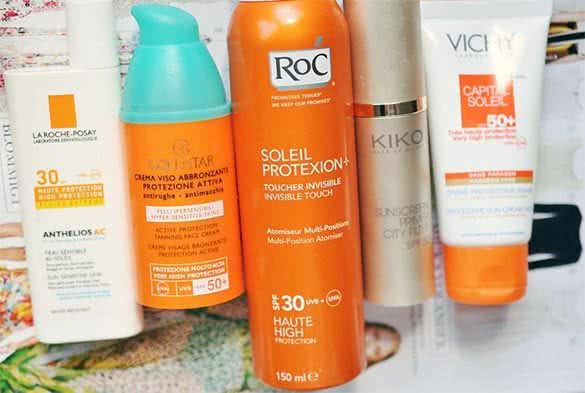
It’s important to eliminate anything that is causing more irritation and redness. Regardless of the underlying cause, there are a few things that will always make your face redder. Whether you are dealing with rosacea, eczema, acne or just a pink skin tone, the sun and cosmetics are the two biggest causes of facial redness.
You have probably heard it a million times but it really is important to always, always wear sunscreen. Even if it’s cloudy or you won’t be outside for long, it’s critical to have full UVA/UVB coverage.
While a lot of foundation, tinted moisturizers and BB creams have SPF, it really isn’t enough. Less is definitely not more when it comes to sunscreen. Most dermatologists agree that added-in SPF just isn’t going to do the job. “I don’t think that most women wear heavy enough makeup to get an adequate SPF from their makeup,” says dermatologist Dr. Lisa Garner.
When asked about the two-in-one SPF approach, David J. Leffell, M.D., professor of dermatology and surgery at the Yale School of Medicine, said: “It’s a good belt and suspenders approach but I would not rely on sunscreen in a product that was intended for another purpose.”
On top of just generally not being effective, you really need to apply sunscreen every two hours. That means that if you apply your makeup at 8 am, your SPF protection is done by 10 am. Obviously if you are relying on that application to be sufficient for the hot midday sun, you are going to end up with issues.
“If you’re in the sun, your sunscreen is good for a max of two hours, and depending on the sunscreen it might not even last that long,” Garner added.
If you really do want a two-in-one, go for a plain moisturizer with SPF. It’s an ideal solution if you’re already dealing with dry skin. Go for a proper, thick cream facial moisturizer rather than a watery lotion and apply it every time before you go out.
If that seems like a hassle, check out some facial SPF sprays. They are ultra-easy (no mirror required!) and you don’t have to worry about reapplying your makeup afterward.
A lot of women make the mistake of assuming that they are getting more protection with a higher SPF label. Sadly, that’s not true. Sunscreen protection time, whether it’s is SPF 5 or SPF 90, is only two hours. No exceptions or miracle formulas available.
On top of that, it’s important to know that you aren’t getting double the protection with double the SPF number. When you use the right amount and apply regularly, you will be blocking out about 96 percent of the sunburn-causing UVB rays from the sun with an SPF 30.
If you use an SPF 60, you don’t magically double that and block 192 percent of the sun’s rays. So, grab an SPF 60 if you want, but don’t assume that it lasts longer or blocks much more than a good old SPF 30.
In addition to the sun, makeup is another serious cause of irritation for a lot of women. If you find yourself with red, irritated skin on a regular basis, it’s important to start taking product labels seriously.
Keep all of your products as basic as possible. Look for non-comedogenic, oil-free and fragrance-free makeup. Any products with alcohol, peppermint, menthol, witch hazel, eucalyptus oil, clove oil, glycolic acid or salicylic acid can cause serious irritation.
A lot of women live with cosmetic allergies for their entire life and never actually know about it. The biggest problem is that it’s incredibly hard to track down the culprit. Because most of us are using a multi-step makeup routine, it’s not easy to pinpoint the problem. Deciding if it was the face wash or the primer or the foundation or the blush that caused the irritation isn’t so obvious for a would-be doctor of the internet.
According to Dr. Noëlle Sherber, a dermatologist in Washington, DC: “Allergens are usually preservatives, fragrances, colors, or formaldehyde-releasing agents like imidazolidinyl urea or quaternium 15.”
“Methylisothiazolinone (MI) is a preservative the American Contact Dermatitis Society is concerned about, since it’s recently been allowed in higher concentrations in cosmetics than before, which may account for the increase in allergies,” she continued. “MI is often in baby wipes and makeup-removing or cleansing wipes, and I’ve had patients develop facial eczema that I can trace back to them using cleansing wipes rather than a traditional rinse-off cleanser.”
“As mineral makeups have become more popular, I’ve seen many cases of eczematous rashes due to its shimmery mica, and acne eruptions due to bismuth, which is included in some brands’ formulations,” she said.
Long story short: it’s incredibly hard to diagnose cosmetic allergies on your own! If you think you are dealing with red, irritated skin, there is a good chance that you have a cosmetic allergy.
According to Sherber there are a few telltale signs. “You’ll know—the most common type of cosmetic allergy is called “irritant contact dermatitis” and means red, itchy, rough skin where you’ve applied the product, and sometimes comes with a stinging or burning feeling,” she said.
“Another type of reaction I see is “acne cosmetica,” red inflammatory acne bumps without the blackheads you’d see with the usual form of acne. The most severe allergic reaction, called “allergic contact dermatitis,” can cause blistering and poison ivy-like eruptions, or even facial swelling, and means you should see a doctor right away,” she added.
Cover it up
Unfortunately, you will probably only get so far by treating the problem. Some of us will always just have a pink undertone to our skin. Of course, tackling the issue is your best option, so don’t just rely on makeup. Focus the bulk of your energy on soothing your skin rather than covering it up.
That said, you’ll probably still want to cover it up with makeup when you’re in public. A lot of women make the mistake of using a green primer to reduce redness. While it is true that green counteracts redness, it’s important to not go too crazy with that.
If you have a single spot that you are trying to cover, green is great. A green concealer can make a major difference on a red, irritated zit. But, when it comes to covering your entire face, stay away from green.
Yellow primer is far more user-friendly and can counteract the redness in your skin just as well. That said, it does depend on your skin tone. If you really want to get serious, your best bet is to get both yellow and green primer. By mixing the two, you can get all of the redness cancelling properties of a green toner while using the yellow toner to warm up your skin color and prevent the dream green glow.
What is your experience with skin irritation? Do you know of some other ways to soothe it, or have any advice for other readers? If you do, you’re welcome to leave comments below.






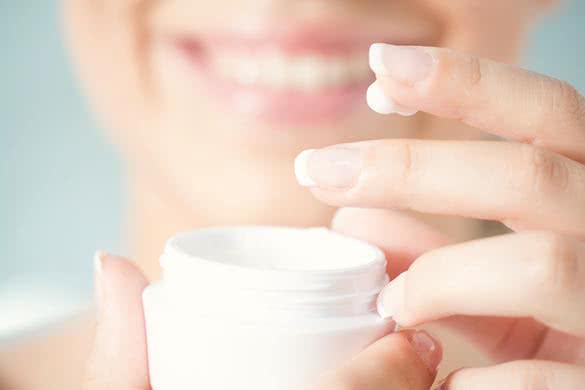
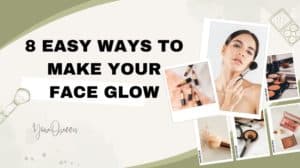


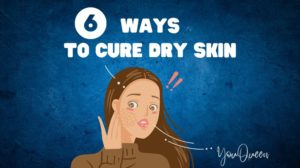

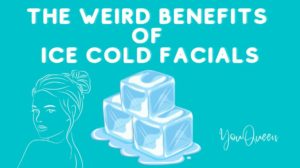
I am 18 yrs old, 1 part of my face is redish while the other side is fair. Naturally that was how I was bought to this world i don’t really like it cus am ashamed to be in the midst of my friends. Can you please help me with any cream to remove the redish part of my face to fair?
I’m 14 and ever since i was a baby my cheeks have been patchy and red, almost as if it is a rash but it doesn’t fade, or get inflamed. it’s just, there. and i hate it with a passion and i get comments on it from people around me and i am forced to wear makeup to look “normal” and if anyone has any solutions to even just lighten the redness slightly it would be greatly appreciated. thankyouuu!
pls provide me direct treatment what will i do about m red cheeks and nose . i want to clear my face in any cost .